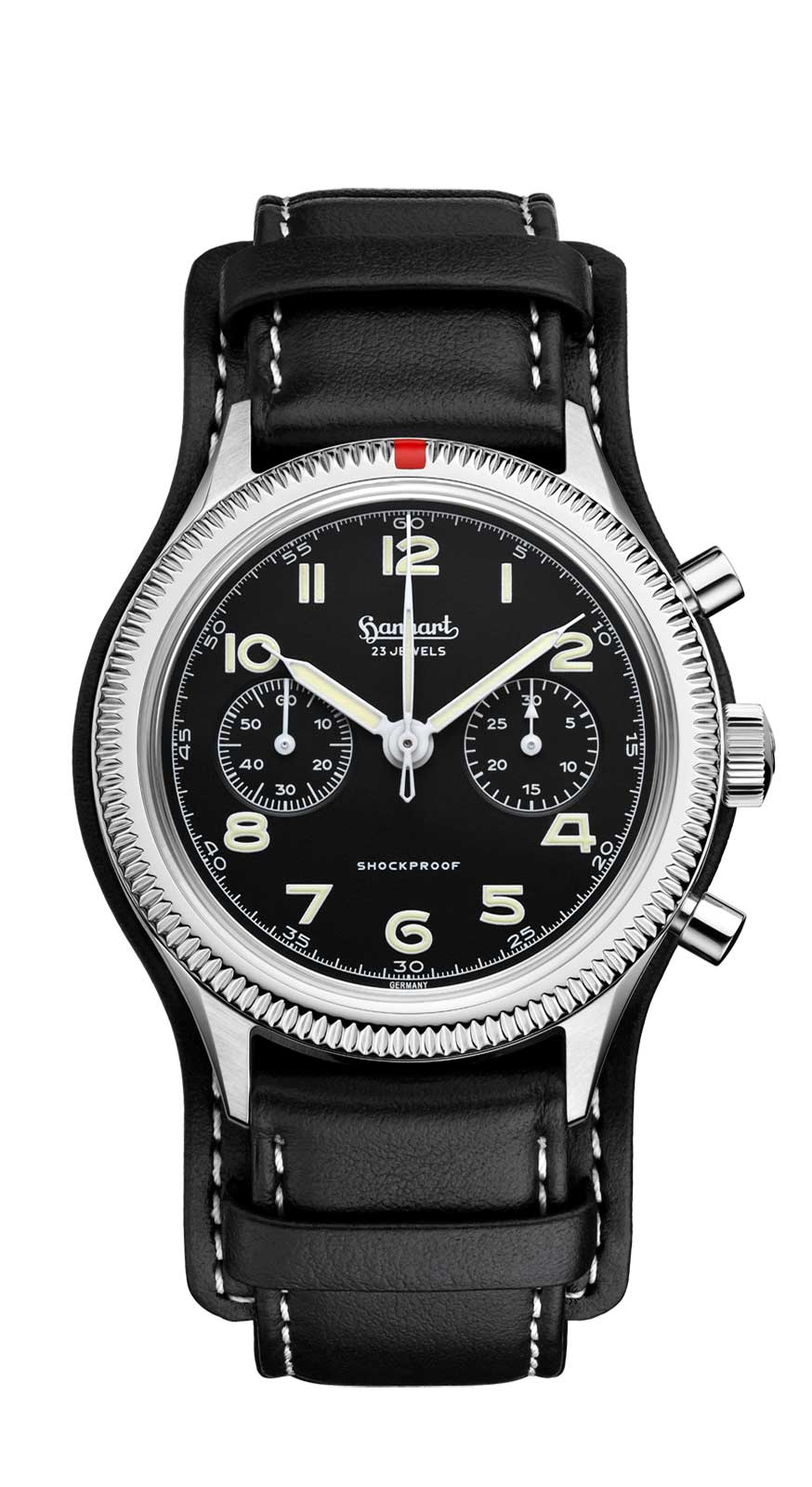Hanhart specializes in the production of stopwatches and high-quality chronographs.
In 1882, the Swiss Johann Adolf Hanhart founded his watchmaking factory in Diessenhofen, Canton Thurgau. Due to a shortage of watchmakers, he relocated it after 20 years across the border to the watchmaking capital of Schwenningen in the Black Forest.
His youngest son, Wilhelm Julius Hanhart (* October 31, 1902, † October 22, 1986), joined the company in 1920 at the age of 18. In 1924, Wilhelm Julius Hanhart launched the world's first affordable stopwatch, which was intended to compete with expensive Swiss products.
The success of this watch laid the foundation for the company's rise. From 1926 onwards, the product range was expanded to include wristwatches and pocket watches.
In 1938, Hanhart developed its first push-button chronograph, Caliber 40. Its faithful replica, known today as the Pioneer Mk I, is very popular among watch enthusiasts.
Introduced in 1939, the push-button chronograph was issued to the Navy and, above all, the Luftwaffe. Due to its reliability and accuracy, it was just as popular with pilots during World War II as the Tutima brand watches from the Glashütte manufacturer UFAG (Uhrenfabrik AG Glashütte).
In addition to these pilot chronographs, production of the two-pusher model Caliber 41 began around 1940. Pilot watches became the manufacturer's main product at the time, which also produced pocket chronographs for naval artillery.
At that time, Hanhart manufactured, among other things, eight different stopwatches. The so-called super-fast oscillator made it possible to measure 1/100 of a second with a mechanical stopwatch. However, watch production had to be curtailed by the end of the war in favor of producing time fuses for torpedoes.
Hanhart started its serial numbers at 100,000, and early models carry very small numbers, e.g., “100,236” from 1942
Military watches from World War II typically range between 100,000 and 127,000
Early Hanhart chronographs – such as the Caliber 40 – date from 1938, Caliber 41 from around 1940
Caliber 40 – single-pusher chronograph, since series launch in 1938, based on Landeron movement
Red pushers, asymmetrical layout and rotating bezel were widely used in Hanhart pilot chronographs from 1939
Monopusher (single pusher): first versions from 1938
Two-pusher (caliber 41): developed for the Luftwaffe from 1940
Caliber 41 – two-push flyback model, introduced in 1939/1940
Serial number 105 800, caliber 41, steel case → most likely circa 1941–1945, two-pusher pilot's chronograph
Serial number 100,000–127,000 + caliber 40 or 41 + knife case → WWII era (approx. 1938–45)
Serial number significantly above + Caliber 41 + Steel case → late 40s to 50s
After the end of the war and until the 1960s, many models were produced in steel – for example the well-known 417 ES design
417 ES: Original model from 1954,
The 415 ES models date from the 1960s
415 ES: first in the mid-1960s
Serial number 115 000, caliber SW510, 39 mm modern re‑edition → Hanhart Pioneer/417 ES
Hanhart homepage:
1938 - DEVELOPMENT OF THE SINGLE-PUSH CHRONOGRAPH ``CALIBER 40``
The year 1938 marked the beginning of a new era in the company's history. The first Hanhart chronograph model went into series production: the single-pusher "Caliber 40," which would soon become the company's flagship product. In its 2003 reissue as the "Primus" model, it became a sought-after collector's item.
1939 - PRESENTATION AND RELEASE OF THE MODEL ``TACHY TELE``
In 1939, the legendary pilot's chronographs "Caliber 41" and "TachyTele" followed – some with a red-lacquered pusher to prevent accidental resetting. The Tachy Tele, introduced in 1939, was issued to the Kriegsmarine but primarily to the German Air Force. Due to its reliability and precision, it was also very popular with professional pilots during World War II. By 1939, Hanhart had already increased its sales figures to such an extent that it employed 200 people.
1940 - LAUNCH OF THE TWO-PUSH MODEL ``CALIBER 41``
Production of the two-pusher model "Caliber 41" began in 1940. Pilot's watches became the manufacturer's main product at the time, which also produced pocket chronographs for naval artillery.
1945 - THE SO-CALLED ``B-UHR`` OBSERVATION CLOCK
The B-Uhr was produced in the postwar years with a manual winding mechanism and a caliber 44 movement. The three-hand watch was very popular as a military watch, but also as a civilian watch. The simple dial allowed for easy legibility, and the low case height made the watch very comfortable to wear.
1948 - WILLY HANHART RETURNS AND PRODUCTION OF THE CHRONOGRAPH ``ADMIRAL`` BEGINS
Willy Hanhart returned to the newly founded state of Baden-Württemberg after being acquitted of any war crimes after a very short period of time. After the war, Hanhart was unable to resume production immediately due to a break that lasted from 1945 to 1948.
From 1948 onwards, pilot chronographs were produced again. Hanhart produced the "Admiral" chronograph on behalf of the French – specifically for doctors and officers. The German Navy was supplied with precision timepieces. By the early 1950s, production was already running at full speed again. Hanhart increasingly focused on the manufacture of mechanical stopwatches and simultaneously launched several innovative products, such as timers and the "Sans Souci" wrist alarm clock.
1957 - SUPPLY OF CHRONOGRAPHS TO THE BUNDESWEHR: THE FAMOUS "CAL. 42"
Hanhart initially manufactured watches for the French Air Force, and from 1957, with slight modifications, also for the re-established German Air Force and German Navy. At that time, Hanhart was the sole watch supplier to the German Armed Forces. Other Western European air forces also supplied the stopwatches, with which Hanhart had become the market leader in Europe in the 1950s.
Until 1962, pilot's watches and chronographs were built for staff officers and doctors of the German Armed Forces (Bundeswehr). The Hanhart Caliber 42, a column-wheel caliber with a tempo setting (now known as a flyback) and manual winding, was introduced in 1957 and was a further development of the Calibers 40 and 41. The 417 E models in the matte chrome-plated brass case and the 417 ES Flyback in the stainless steel case were originally produced for the German Air Force (Bundeswehr) between 1953 and 1962, which is why the watch is also known among connoisseurs as the "Bundeswehr Chronograph."
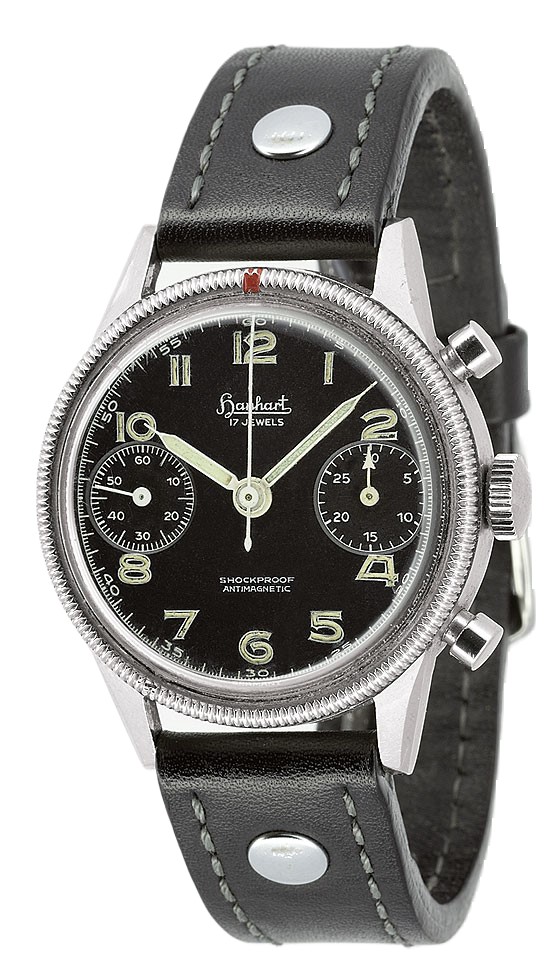
1960 TO 1962 - EXPANSION AND MARKET LEADER IN STOPWATCHES
The expansion of the stopwatch range continued with the partial loss of orders from the German Armed Forces in the 1960s. In 1962, Hanhart repeated its coup of 1924: It surprised the market with its new stopwatch, the "Amigo." The company became the market leader and Europe's largest producer of mechanical stopwatches.
Source: Wikipedia, Chat GPT, Watch Forum

2004 - SPECIAL SERIES ``DORNIER BY HANHART``
The German company launched the "Dornier by Hanhart" model in 2004. Its initiator was Irén Dornier, the grandson of the famous aircraft designer Claude Dornier. He had a chronograph built in Gütenbach dedicated to the legendary Do-X flying boat and accompanied him on a very special journey: Irén Dornier flew around the world in a historic seaplane, wearing the Hanhart chronograph on his wrist.
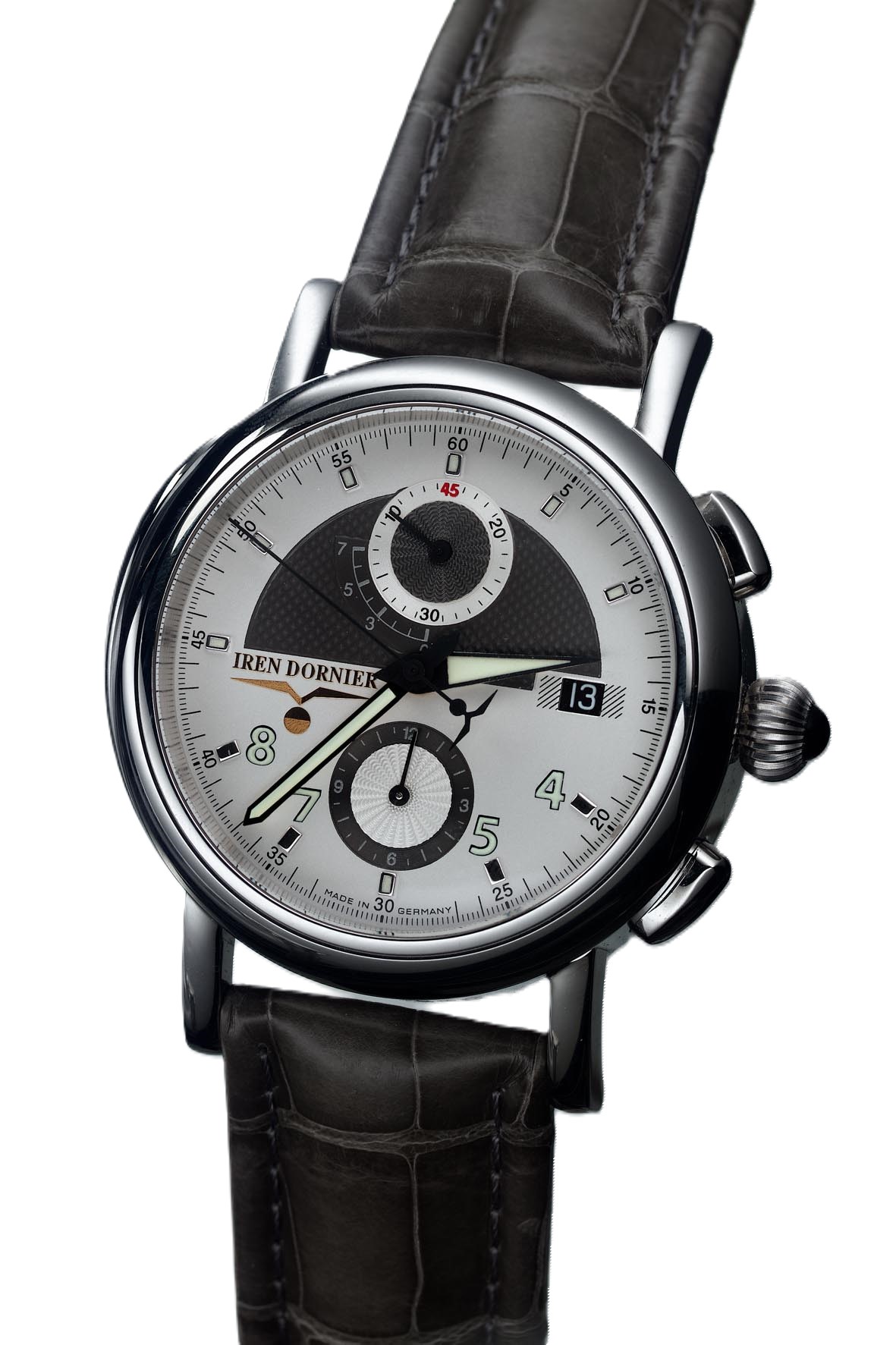
2005 - INTRODUCTION OF ``M39``
In 2005, a highly successful replica, the "M39," followed. Further newly developed models followed. This marked the beginning of a new watch series based on the 1939 originals.
2007 - 125 YEARS OF HANHART: OPUS41 & SPIRIT OF RACING
In 2007, two special editions marked the company's 125th anniversary. They reflect the company's history: "Opus 41" and "Spirit of Racing." The hand-wound chronograph "Opus 41," equipped with an original, historic Hanhart column-wheel movement "Caliber 41/42," is made of platinum and limited to 39 pieces. The high-quality collector's set "Spirit of Racing" honors the spirit of 125 years of timekeeping for sporting competitions with the Hanhart classic wristwatch "Minos" and a special model of a rattrapante flyback stopwatch.
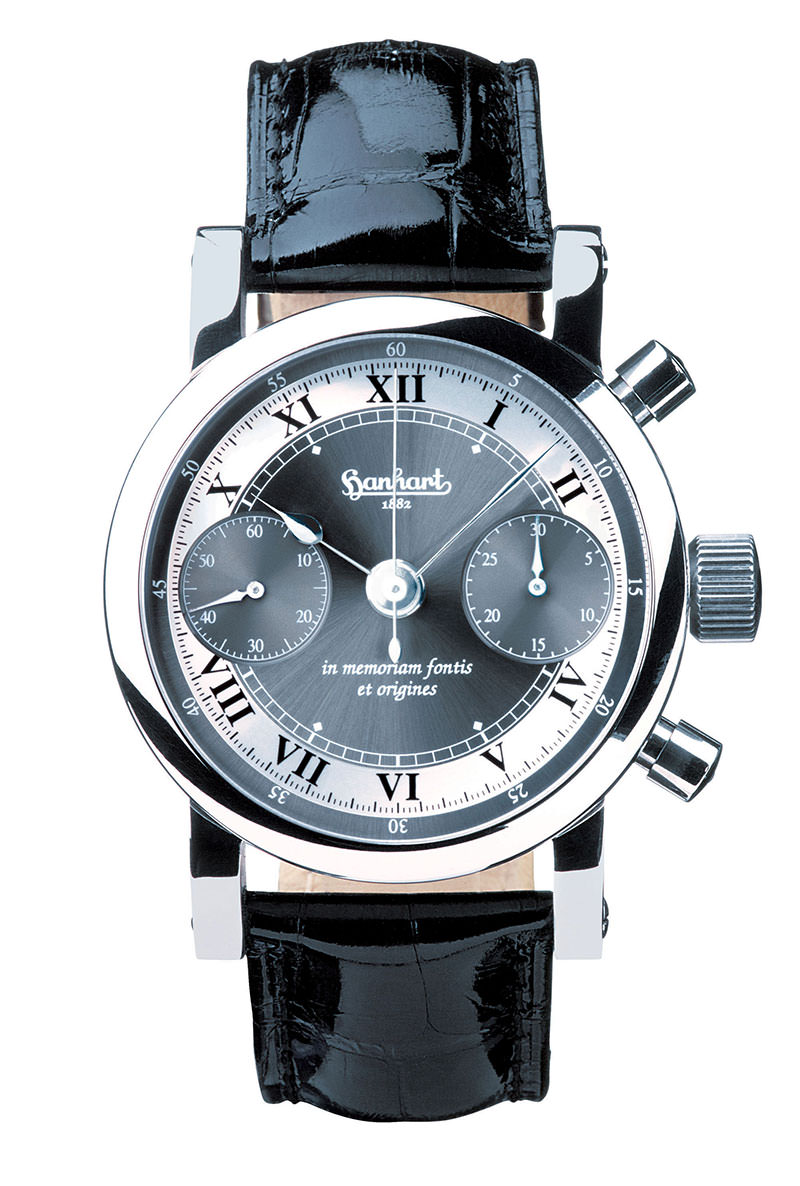
2008 - THE WORLD FIRST ``TACHYMASTER``
In 2008, Hanhart launched the world's first "Tachymaster" stopwatch: a completely new, innovative tool for passionate vintage car rally drivers. It displays the route to be driven, making it much easier to complete timekeeping tests. With the launch of the "Tachymaster" for vintage car rallies, the long-established watch manufacturer underscored its leading position as Europe's most important stopwatch manufacturer.
2009 - PRESENTATION OF THE ``PRIMUS`` MODEL SERIES AT BASELWORLD
In close collaboration with the workshops of the manufactory in Gütenbach and highly specialized suppliers from the Swiss watch industry, a new, progressively designed collection of mechanical chronographs was developed under the name "Primus" and presented for the first time at Baselworld 2009. This collection builds on the long tradition and expertise of the brand's own watch manufacturer and combines historical elements – such as the unmistakable red pusher, which has characterized Hanhart watches since 1939 – with state-of-the-art technology and progressive design. The Pilot, Racer, and Diver models are based on the brand's core competence of high-precision, extremely reliable, and robust timepieces for use in the air, on land, and on the go.
2011 - PIONEER MODELS
At Baselworld 2011, Hanhart is introducing three new models in its "Pioneer" collection. The design and technology of the "MonoControl," the "TwinControl," and the "TwinDicator" are based on the brand's legendary chronographs, thus building on its long tradition and high level of expertise while delivering a contemporary interpretation. With its hour counter integrated into the small seconds hand and the displays positioned right at the edge of the dial, the "Pioneer TwinDicator" is a particular highlight of the collection.
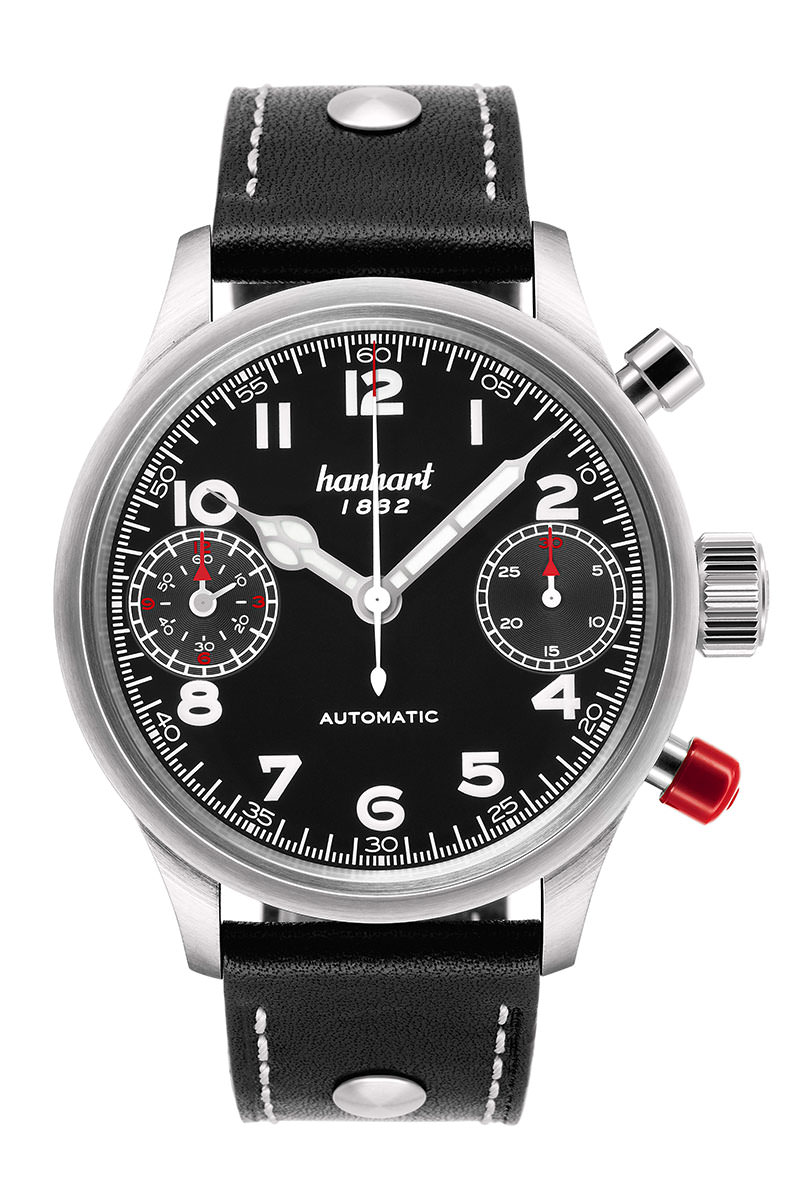
2012 - 130 YEARS OF HANHART
Hanhart celebrates its 130th anniversary in 2012. The Swiss-German watch brand, which still maintains its position as a major producer of timekeeping instruments, looks back on an unbroken manufacturing tradition and a successful and innovative corporate history. Today, it focuses more than ever on its core competency: the production of functional instrument watches for use in the air, on land, and at sea.
2013 - PRESENTATION OF THE ``RACEMASTER`` MODELS
Reminiscent of the traditionally close connection to motorsports in the 1960s and 1970s, Hanhart is launching three new chronographs in the "Pioneer" collection. The "Racemaster GT," the "Racemaster GTM," and the "Racemaster GTF," with their sporty, technical design, are the first watch models to feature cases made of HDSPro® steel, which is 100 times more scratch-resistant.
2015 - LIMITED EDITION FOR URBAN SURVIVORS
Under the motto "Urban Survivor," Hanhart appealed to high-performance enthusiasts seeking adventures beyond the mainstream with this limited edition. The chronograph, with its Black Forest-inspired design, was strictly limited to 50 pieces and sold out in a short time. Its outdoor qualities are clearly at the forefront of the design, appealing precisely to those individualists who consciously choose to purchase such a unique timepiece.
2018 - ``PIONEER ONE`` & ``BLACK FALCON PRIMUS RACE WINNER``
PIONEER One – a timeless design admired for decades – has returned with modern technology and as a three-hand watch. The hands and basic dial design are based on the iconic Hanhart 417 ES Flyback. By reducing it to a three-hand watch and applying the latest watchmaking standards, Hanhart revives the unique charm of the early 1950s. The new limited-edition Black Falcon PRIMUS Race Winner was created in cooperation with the Black Falcon Team, a young German motorsports company currently celebrating national and international success. Produced in the highest quality and a unique color combination, it is designed for racing drivers, adrenaline junkies, car enthusiasts, or the modern man whose passion is speed. The Black Falcon Chronograph's combination of sporty design and innovative technology is unique.
2019 - S-SERIES
Hanhart's strictly limited S series was dedicated to a very special anniversary: 50 years of the Saab 105 in service with the Austrian Armed Forces. The instrument watches were designed in the style of the onboard clocks of the Saab 105 combat and reconnaissance aircraft, thus bringing a piece of Austrian Air Force history to the wearer's wrist. The S 105 OE and S 105 OE GMT correspond to the onboard clock of the Saab 105 used by the Austrian Armed Forces, and the SK 60 GMT is based on the onboard clock of the Swedish model of the Saab 105, known as the SK 60.
2020 - 417 ES: THE RETURN OF A LEGEND
With the new Hanhart 417 ES, we celebrate the return of a legend among stopwatches. Over 60 years ago, its historic model served as the German Armed Forces' first pilot's chronograph. Today, it combines the best design of that era with the most modern manufacturing techniques of our time. The result: a robust chronograph with a fascinating history for everyday use and adventure.
Sources: AI, Wikipedia, hanhart.com
Photos: hanhart.com






